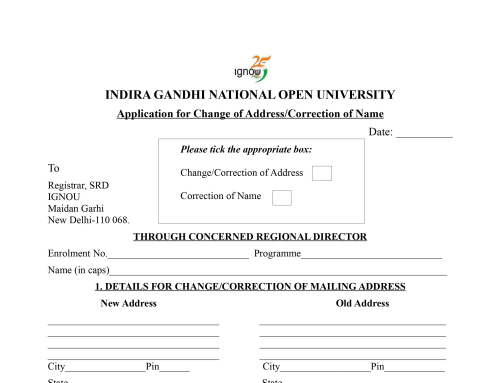What Is Research Methodology?
Research methodology refers to how a learner develops a project work to guarantee the validity and reliability of results that meet the research objectives and goals. We have number of students who come to us and ask “how to write research methodology” of the project work. Here we have tried to mention all the things we have to keep in mind while composing research methodology.
Below are the examples
- What information should you gather?
- Who do you collect it from (known as sampling design?)
- How do you get the information (known as the method of data collection?)
- How do we analyze the data (known as “data analysis methods”)
In the Ignou MBA project, there is a research methodology section (or part) that will cover the issues discussed above. A good methodological chapter within a project work provides a thorough explanation of the decisions that were made in the methodological area as well as the reason they were chosen.
The methodology chapter must justify the choice of design in a way that demonstrates that the methods and strategies are the best suitable for the research goals and objectives and give reliable and accurate results. A well-designed research methodology will yield solid scientific evidence, while the wrong methodology will not. We’ll examine the most important options for design.
Methodological approaches to different types
The selection of the methodology to employ is based on the field you are researching and the topic of your project work. The method you choose to use must establish an obvious connection to your project and be supported by a review of the literature. If you face any issues with the literature review and want to know how to write a literature review you can check our previous article. Methodological methods can be described as qualitative, quantitative, or mixed methods.
Example

Qualitative studies are basically the descriptive studies that gather data by having in-depth conversations and observations. In general, open-ended questions are asked. This produces rich, precise, and descriptive findings. The majority of qualitative studies are subjective and can be useful in exploring cultural and social issues which are hard to measure.
Quantitative research totally depends on the numbers and stats, It categorizes and measures or identifies patterns or relationships. The data can be collected by conducting surveys, or by using questionnaires. The researcher analyses these types of data with the help of tools and uses SPSS software for the statistics part.
Mixed methods employ a mix of qualitative and quantitative methods to present multiple results about one particular issue. This allows triangulation to verify data that come from more the 2 sources.
Data collection
Data collection is the process where students will perform surveys and collect the data. The reason for the method of sampling you’ve selected. It could be used to sample probability (a random sample of the population of your study) as well as a non-probability sample (which does not require the random sample).
Example

Analysis of data
In the case of quantitative research, explain the types of tests you’re planning to run and the reason you’ve decided to use these tests. Methods for data analysis that are popular for quantitative research include:
- Statistics that are descriptive (e.g., means, medians, and modes)
- Statistics that are inferential (e.g. the correlation or structural equation modeling, regression)
Example

In the case of qualitative research, you must explain how your data are going to be evaluated and support your decision. The most popular methods for data analysis for qualitative research are:
- Qualitative analysis of content
- Analysis of thematic issues
- A discussion analysis
- Analysis of narrative Theoretical basis
- Interpretative analysis of phenomenology (IPA)
Related post
How to Write Scope of the Study of IGNOU MBA Project
How to Write Introduction for Ignou MBA Project
How to Write References in Ignou MBA Project
What are the primary methods of sampling?
As we’ve mentioned before, sampling design is all about selecting the person you’ll gather the data (i.e. you’re sampling). There are numerous options for sampling and the two most popular types of design for sampling are probability sampling as well as non-probability.
Probability sampling refers to the fact that you employ a completely random sample of the population that you’re looking to study (this group is known as “the “population”). If you use completely random sampling, the outcomes of your research are applicable to all people. That is, you can expect similar results across all groups without the need to gather information from all of the participants (which is not always feasible in large numbers).
Non-probability sampling, on contrary, does not use an uncontrolled sample. It could, for instance, be a case of using a convenience sample that is, you’d take a survey or conduct a survey with those who you are able to reach (perhaps your family members, friends, or colleagues at work) instead of a truly random sample (which may be difficult because of the limitations on resources). In the case of non-probability sampling methods, the results can be difficult to generalize.
What shouldn’t be included in the section on research methodology in your Project?
1 – Insignificant details, such as an exhaustive analysis of the methodology (this is a review of literature) or other information which does not help readers’ comprehension of the methods you have chosen to use
2 – A lot of details on the equipment and materials used. If an extensive and comprehensive list is required include it in an appendix
3 – Raw data
Tips to How to Write Research Methodology
1 – Decide what kind of information you’re trying to find. For instance, subjective or objective experimental or interpretive.
2 – A thorough review of the literature is the ideal starting point to choose your method.
3 – Make sure that there is continuity during the entire research process. The validity of your research is contingent upon the authenticity of your research results, the accuracy of the measurements you make and the amount of time it takes to complete the analysis.
4 – Select a method of research that you can carry out. Think about the time and resources available, the feasibility of the research, ethical considerations as well as the accessibility and availability of the equipment needed to accurately measure the phenomena or to answer your thesis.
5 – If you’re having trouble understanding an idea, seek assistance from your instructor, supervisor personnel, or other students.






Leave A Comment